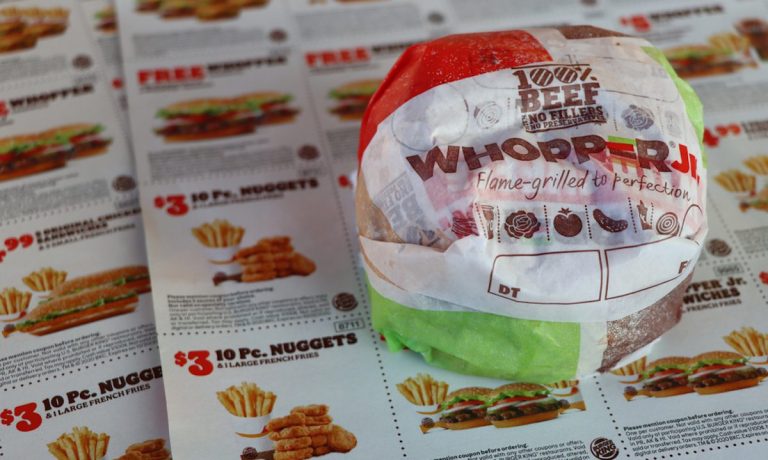Burger King’s Paper Coupon Problem Pits 20% of Loyal Customers Against Digitization Push

Burger King’s push to get consumers on board with its digital offerings could be alienating a huge portion of its most long-standing customers. On Monday (Oct. 25), the chain’s parent company Restaurant Brands International (RBI) reported its third-quarter 2021 results, with Burger King seeing the highest growth out of the company’s three major quick-service restaurants (QSRs). Now, however, as the chain eliminates the use of paper coupons to incentivize consumers to adopt its digital channels, Burger King may risk losing some of its most frequent customers.
“Historically, Burger King, in the U.S., over indexes in paper coupons relative to peers — something in the neighborhood of three times the number of coupons compared to most of our peers,” RBI CEO José Cil told analysts on a call. “It’s been traditionally an important channel, but the effectiveness has eroded a bit over time, especially with younger consumers, and so we felt, and we do feel, it makes sense to transition … the focus to other consumer-facing channels that we believe, over time, will generate a higher return.”
This focus on the habits of younger consumers could come at a high cost. Research from PYMNTS’ report “The Bring-It-to-Me Economy,” created in collaboration with Carat from Fiserv, finds that these digital holdouts tend to be older consumers. The study found that while 61% of consumers are ordering restaurant-made food online, only 42% of baby boomers and seniors are doing so, making this age group the only one that under-indexes relative to the general population.
See also: Bring-It-to-Me Economy Ascends as Consumers Embrace Home-Centric Lifestyles
This group has a significant amount of spending power. Older consumers comprise 36% of the overall population. Since 58% of this 36% does not order online, that means Burger King is risking losing the loyalty of 21% of its customers.
For consumers who are already on board with digital engagement, however, RBI is working on using data to tailor the experience for each user, building loyalty and driving spending. Cil told analysts that for Burger King, the company is working on “the ability to personalize offers and drive behavior with our CRM,” in addition to investing in a drive-thru experience that recreates the experience of digital ordering in terms of providing relevant, personalized messaging.
As Cil explained, “At drive-thru-enabled locations, mornings are outperforming pre-pandemic levels on average, which shows the overall long-term value of drive-thrus, which is one of the reasons we’ve invested significantly in [them] to modernize our experience with outdoor digital menu boards and loyalty integrations.”
For much of this year, Burger King has been testing a program that uses Bluetooth to identify Royal Perks loyalty program members, displaying their previous orders on menu boards to make the experience feel more personal, boosting conversion.
Related news: Restaurants Race to Offer Most Efficient AI Drive-Thru Experience
These initiatives can go a long way toward incentivizing consumers to engage with the brand’s rewards program. Findings from the July-August edition of PYMNTS’ Delivering on Restaurant Rewards report, created in collaboration with Paytronix, found that 72% of QSR customers consider the availability of customized coupons or discounts when deciding whether to sign up for loyalty programs.
Read more: Two-Thirds of Consumers Find Restaurant Rewards Impersonal